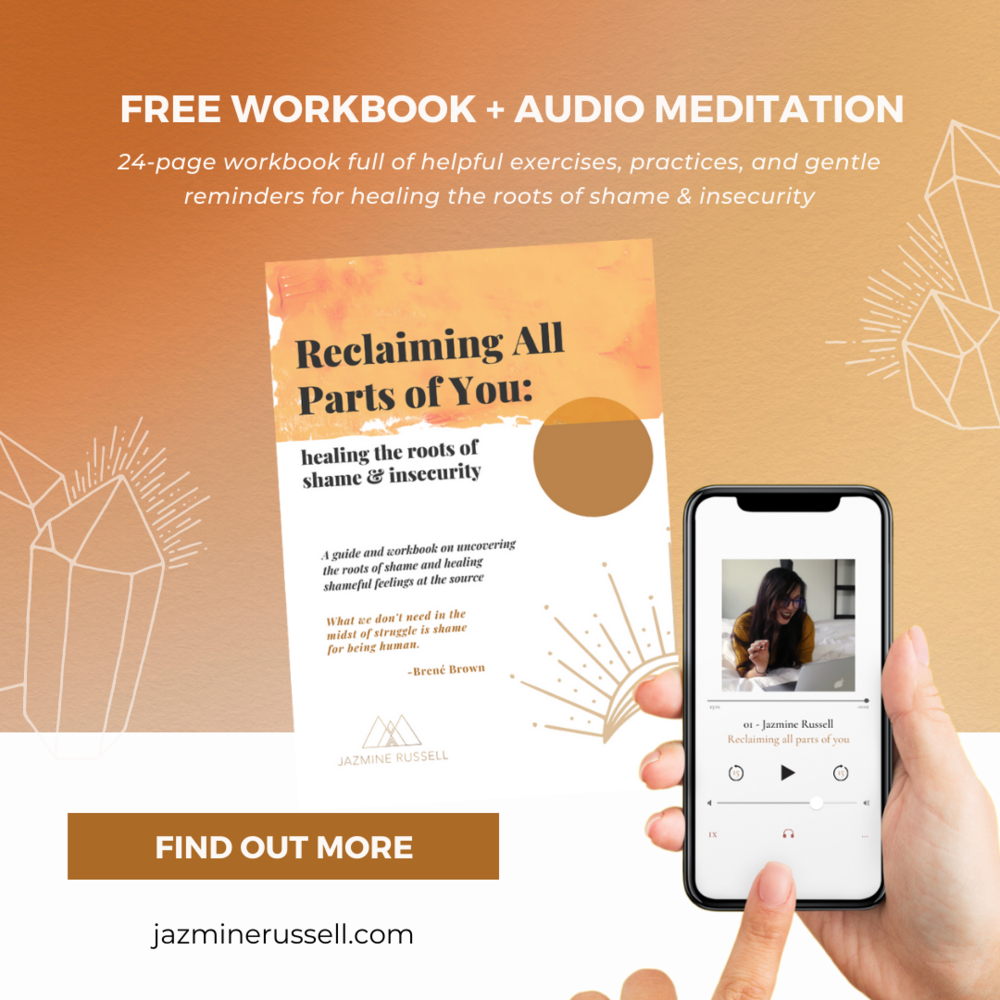How to Release Emotions Trapped in the Body
How to Release Emotions Trapped in the Body
We all feel emotionally stuck and stagnant sometimes. We may sense that there are currents of intense emotions waiting underneath the surface. Maybe we want to cry, but no tears come. Or perhaps we resist it because it can it feel too terrifying and we fear we will lose control.
I had a client once who had been plagued with the “emotional artist” label by family members and friends. Not wanting to look at their own emotions, it was easier for them to label him, than to face their resistance. Upon reflection, he turned to me and said "Why is everyone so emotionally constipated?!" He was right. It wasn’t just his family, but the broader context we live in. Our society not only gives us very few opportunities to express our big emotions (How often have you heard "save it for the therapy session"?), but also consistently undermines the value of our emotions.
Our emotions are truth bearers. They tell us what is real and true for us. They are not fragments of our ego, nor are they pesky troublemakers creating drama in our life. Our emotions are our life force and they deserve to be validated.
We sometimes believe that our emotions are the problem because we conflate emotion with our beliefs, stories, and narratives around what we make the emotion mean (e.g. I'm bad, she's to blame, my life sucks, etc.). Emotions, in and of themselves, are neither good nor bad. Trying to bypass our emotions rather than feel them is the quickest way to pile on pain.
The Cost of Emotional Repression
Our emotions live in the body. Therefore, our emotions have physical impacts. The cost of not expressing and releasing emotion is not to be underestimated.
Some signs that you are in need of emotional release:
feeling stuck, blocked, confused
feeling unmotivated, uncreative
spiraling in self-doubt or shame
feeling raw, sensitive, easily overwhelmed or provoked
dissociation, lack of empathy
sudden spurts of emotion that feel bigger than the situation has warranted
restlessness, wanting to escape or rebel
seeking constant distraction or stimulation
old wounds and triggers resurfacing
physical ailments (especially in heart, hips, and stomach)
“Our emotions are truth bearers. They tell us what is real and true for us. They are not fragments of our ego, nor are they pesky troublemakers creating drama in our life. Our emotions are our life force and they deserve to be validated.”
The body doesn't lie. If you know there's an emotion or situation you’ve been avoiding, all that you seek is on the other side of release. We don't need to push or force, often when just given the time and space, our bodies take the opportunity and are grateful for it.
How Do I Release Stuck Emotions?
Since our emotions live in the body, our practices for emotional release must address the body as well. Here are several body-based techniques for emotional release:
Breathwork for emotional release
Breathwork is my favorite practice for emotional release because it’s simple, incredibly generative, and addresses several aspects of emotional stagnancy in the body, mind, and energy system at once.
Breathwork breaks through resistance
Without much physical or mental exertion, using simple controlled breath patters can help stop the mental stories and move us past habitual patterns. Breathwork moves stagnant energy and helps us breaks through resistance.Breathwork eases the nervous system
It’s a body-based practice that puts us into a parasympathetic state where we can rest easier, feel less triggered or anxious, and have greater capacity to move into and through uncomfortable emotional states.Breathwork helps us bypass the conscious mind to reveal what’s beyond our awareness
Holotropic breathwork, specifically, can generate a gentle altered state of consciousness. In this state, we bypass the conscious mind, stories, and narratives and go straight to the heart of it. We return to a receptivity of information beyond words - symbols, metaphors, and feeling states that amplify healing.
Read more about the science of holotropic breathwork here
2. Somatic Embodiment Practice
Having an embodiment practice makes it easier to see where we are holding tension, pain and stuckness in the body, so that it can be released. You can do a quick body scan, or take your time with it. Either way, these are the core elements of an embodiment practice:
Sit, stand, or lay down comfortably in meditation
Start with your feet and move through each body part up to the top of your head. The practice is to not only be aware of each body part, but to fully inhabit each with your energy. There is a slight but crucial difference between being “aware” and “inhabiting” or “embodying”. In embodiment, we fill up the whole internal space with our energy and feel ourselves as living inside the body. You can say internally “I fully inhabit my [insert body part here]” Notice if you feel it’s easier to inhabit some parts as compared with others.
Any place you feel tension, pain, or discomfort, see if you can let it expand rather than shrinking away from it. Be gentle with yourself, don’t force it. Don't try to fix or change it, go to where it’s uncomfortable and acknowledge any resistance around it.
Body talk: Ask how that pain or emotional discomfort wants to be released. See if you get a response from your body in the form of an image, sound, idea, or something else.
You can end by wrapping your arms around your body and feeling a sense of containment.
This practice can be incredibly tender and help to bring consciousness to feeling states in the body.
RECLAIMING ALL PARTS OF YOU: HEALING THE ROOTS OF SHAME AND INSECURITY
WRITING PROMPTS & GUIDED MEDITATION FOR HEALING SELF-DOUBT AND THE “SHAME GREMLINS”
3. Dynamic Meditation
Back in 2016, I spent a few weeks at Osho Ashram in Pune, India. I hadn't studied Osho and I wasn't a follower, nor was I yet aware of his controversial history. But something drew me to this community. Soon, I'd find that what was so novel about his approaches, as opposed to other meditation practices, was that they all incorporated the body, movement, and release. While I can't advocate for his teachings nor do I necessarily align with his methods, I can appreciate one thing that he and I agree with in terms of spiritual practice - that we need to be able to release, express, and move in order to heal. Of all the meditations offered daily there, his signature Dynamic Meditation is what I fell in love with. I'd wake up at 5am, head to a marble pyramid shaped temple with 17-20 others to shout, jump, kick, breathe and exhaust myself into more ease and clarity.
Osho's Dynamic Meditation has 5 stages. The most novel to me was part 2, when his disembodied voice would shout over the loud speaker "Let yourself go crazy!" and the whole room would fill with incomprehensible jibberish, shouts, pounding the floor…it was glorious. And it truly was incredible to feel such a powerful release with a group of people. For years after I held groups of release through this general framework. You can try it on your own at home, and read more about the 5 stages here.
4. Saying What’s been left unsaid
Often, when something is left unsaid or unexpressed, I advise people who want to get some emotions out to write a letter. Maybe it’s a letter to an ex or an estranged family member, or maybe just a letter to self, steam of consciousness style, that reveals what’s under the surface. Either way, we write it, but don't send it. It’s just for us.
While writing is a great somatic practice, I find the voice to be 10x more powerful (and also more intimidating) than the written word. When I let myself say something out loud, it has resonance. There's a level of emotional depth we can hit when we say something out loud vs. writing it down. We feel the truth, the impact, and the reverberation through our whole body.
So consider:
What have you been avoiding saying?
What have you left unsaid with your boss, sister, friend, or self, etc.?
What do you need to get off your chest?
Hit record on a voice note and say it. You can delete it right after, but it’s crucial to have said it out loud.
5. Forest Bathing for Emotional Release
Lastly, we can remember that we're not alone in holding our unspoken pain. All living things move though transitions, birth and death cycles. The earth and all living things embody the quality of transformation. The earth transforms waste into fertilizer, transforming a seed into a gorgeous tree or flower or food. The earth can act as a mirror for our own innate ability to transform our pain into wisdom. We can release so much of our fears, doubts, shame, anger, and grief to that which has the power to hold it all. Here’s an earth-based practice I often do for emotional release:
Get into nature, take a slow walk, soak in the soft slow presence of it all.
Sit with a plant, animal, or rock. Notice and ground into your surroundings. Pay attention to small details. Let yourself receive any messages.
Offer your pain or uncomfortable emotions to the earth, trusting it will be recycled and used as fuel for more life. Put your hands on the ground and visualize it all releasing from your body into the dirt. Ask to receive wisdom, clarity, and life force energy.
Give thanks and gratitude.
Don't feel pressured to use all of these emotional release techniques at once. Do what works for you and remember that your body already knows how to do this. Feeling, releasing, and transforming big emotions into wisdom is what the body innately knows how to do. We just have to get out of our own way.
















